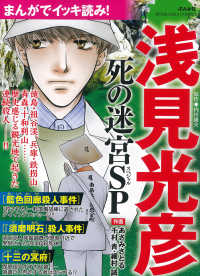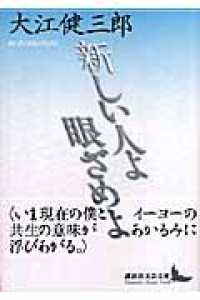- ホーム
- > 洋書
- > 英文書
- > Literary Criticism
Full Description
An unprecedented cultural history of reproductions of medieval manuscripts
Facsimiles are, or claim to be, exact copies of objects, and medieval manuscripts have long been a focus for this kind of reproduction. Today, digitization delivers complete, high-resolution, full-color digital copies of thousands of medieval manuscripts to anyone with an internet connection. But for centuries, scholars in fields like art history, or paleography, or textual editing had to travel to see the manuscripts their work depended on. When they couldn't, they relied on copies—drawings, engravings, lithographs, and eventually monochrome photographs, usually of parts of a manuscript rather than the whole thing.
Facsimile explores the prehistory of our digital present, focusing on the eighteenth and nineteenth centuries—a period that witnessed rapid technological change; a renewal of interest in the Middle Ages in the public at large; the consolidation and emergence of scholarly disciplines; and the increase in institutions that cared for medieval manuscripts. Siân Echard shows how facsimiles of medieval manuscripts were central to all these developments. Focusing on Britain, Echard traces how predigital technologies of reproduction were viewed by their practitioners and consumers, and how they helped to form the ways people related to the medieval past. Facsimile users were scholarly and popular, with interests in text, or image, or books, or all these things at once. Four chapters—Letter, Figure, Color, Catastrophe—show how the human hand, the human eye, and the human imagination intertwined with technology, creating modern-medieval hybrids that sit at the intersection of past and present.
From the rise of paleography and diplomatics as disciplines to the emergence of calligraphy as a craft and hobby, from the use of facsimiles in shaping narratives of national identity to the substitution of facsimiles for destroyed or damaged manuscripts in the development of preservation practices, Facsimile offers an unprecedented cultural history of reproductions of medieval manuscripts.








